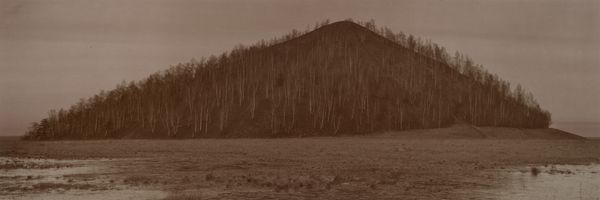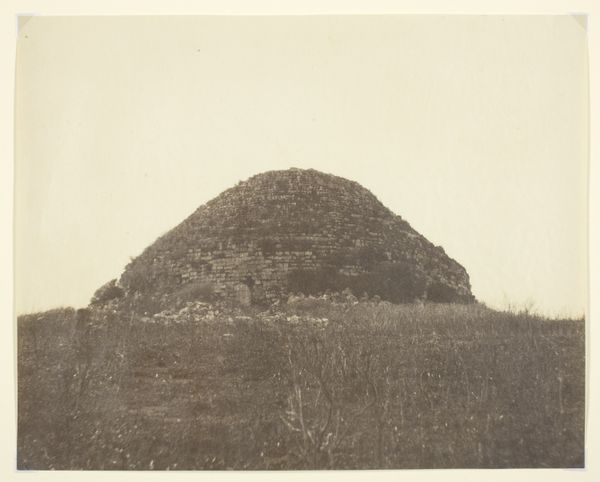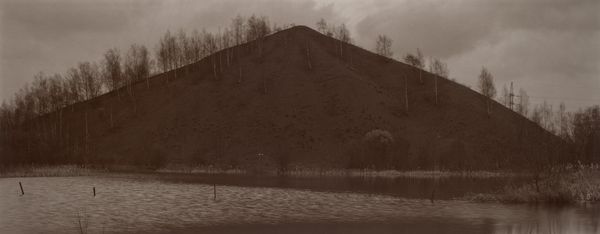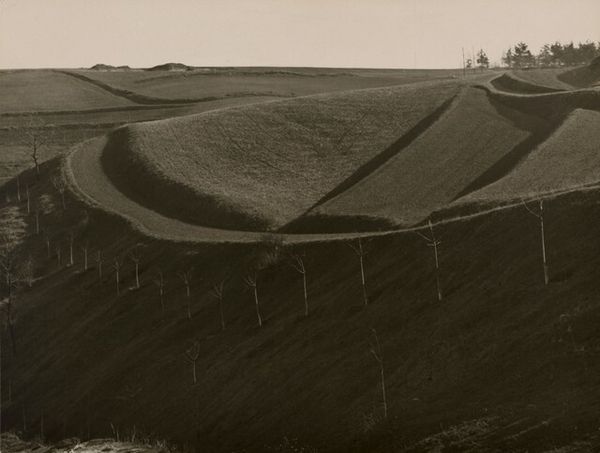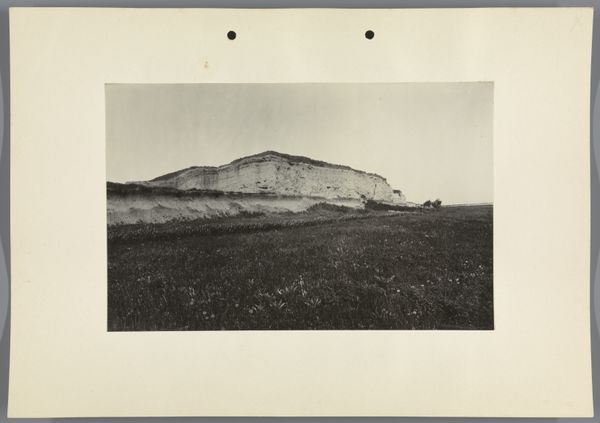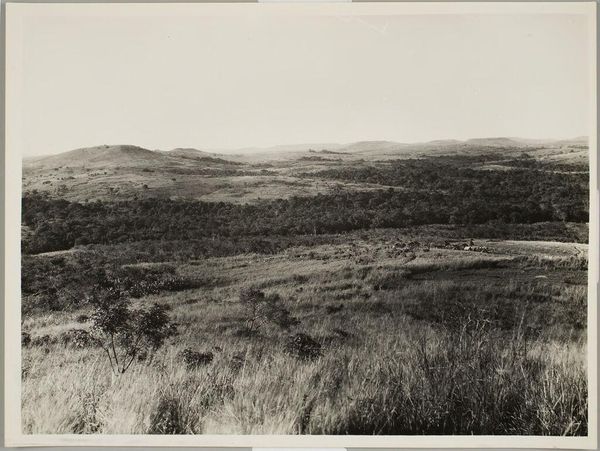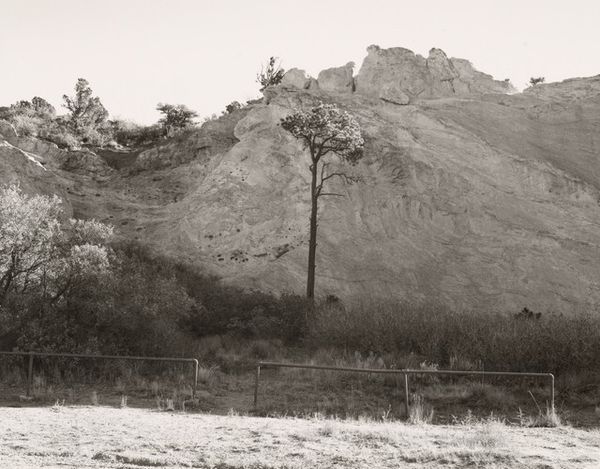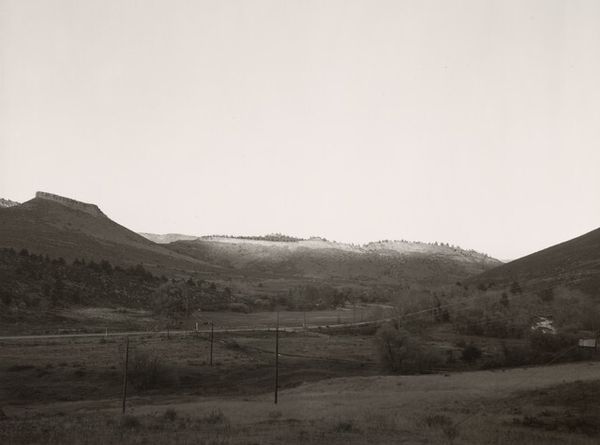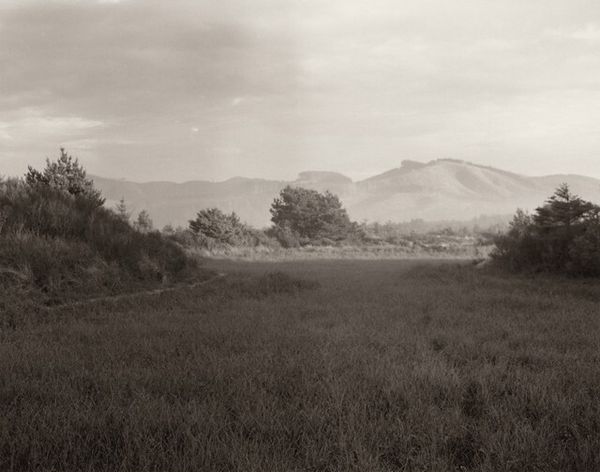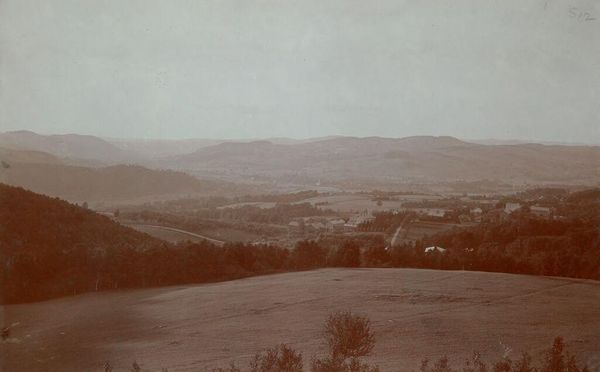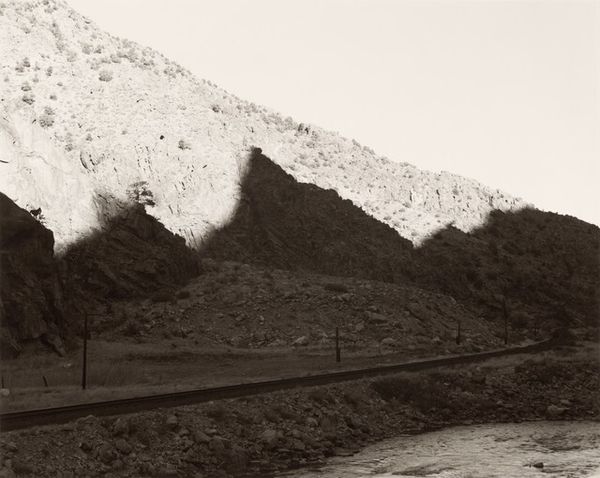
print, photography
# print
#
landscape
#
photography
#
monochrome photography
#
monochrome
Dimensions: image: 14.3 × 49 cm (5 5/8 × 19 5/16 in.) sheet: 18.7 × 55.2 cm (7 3/8 × 21 3/4 in.)
Copyright: National Gallery of Art: CC0 1.0
Curator: We're looking at "Herzogenrath, Germany," a photographic print by Witho Worms dating back to 2007. Editor: My immediate response is melancholy. The monochrome palette emphasizes the bleak, almost barren landscape. There's a sense of something monumental yet decaying. Curator: It’s interesting you say that, since a landscape, even a seemingly desolate one, is full of recurring cultural signifiers. Notice how Worms frames this…this hill—or perhaps even more symbolically a mountain. It reminds us of ancient burial mounds, these architectural memories holding the collective narratives of those who have gone before us. Editor: And, in that light, the photograph almost functions as a commentary on industrialization. The mound is likely artificial. Mining, maybe? And that field in the foreground seems utterly devoid of life, suggestive of ecological damage. I see this photo as evidence in an environmental audit. Curator: It's true that "monument" often has conflicting connotations—it’s a matter of what or who the monument memorializes. What rituals it evokes. But landscape photography so often becomes symbolic shorthand. Do you agree that the monochrome palette is a part of this rhetoric? Editor: Absolutely. It strips the scene of its immediacy, rendering it distant and… timeless, in a way that natural color could never do. But beyond timelessness, the gray-scale adds a layer of gravity that speaks to its potential artificiality and, frankly, violence. Curator: Perhaps the artist attempts to reveal how nature bears witness. I think Worms gives us a sacred site—altered perhaps, yet resonant with enduring meaning and warning, ultimately. Editor: Yes, I see what you mean. The somber aesthetic compels reflection and perhaps the photograph invites us to meditate on our own complex, collective culpability, and accountability, within damaged landscapes. Curator: Thank you, for that thought-provoking lens, that shifted my perception and that added depth, through which this photograph whispers tales of a landscape transformed, yet stubbornly resonant with the past. Editor: And for allowing me to examine the environmental ramifications of place making in order to connect the past and present!
Comments
No comments
Be the first to comment and join the conversation on the ultimate creative platform.
